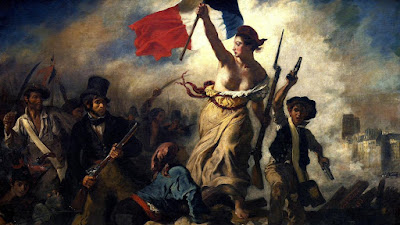Social 10-1
We finished watching "Bend it Like Beckham" today, and I gave you some time to finish up the film study guide that went along with this film. You're going to be handing in that film study booklet tomorrow for homework check marks. You are writing your Chapter 3-4 Test this Friday (please see the study guide below), and your Unit 1 Final Exam one week from today, on March March 7th (please see the study guide below). You are writing your Unit 1 WRA I on March 6th, and I will give you some sample political cartoons and tips for the writing the three source analysis assignment in Thursday's class.
Upcoming Important Dates for Social 10-1 Students:
- "Bend it Like Beckham" Film Study Booklet is due tomorrow
- Chapter 3-4 Test is on Friday, March 3rd
- Unit 1 WRA I is on Monday, March 6th
- Unit 1 Final Exam is on Tuesday, March 7th (please see study guide below
CHAPTER 3-4 TEST STUDY GUIDE:
This test will be written on Friday, March 3rd. It is a matching test with a long answer section.
- Know the key terms from Chapter 3-4
- Be able to answer the Questions for Inquiry in Chapters 3-4 (they appear on p.49, p.53, p.58, p.73, p.80)
- Know relevant case studies from Chapters 3-4: the Francophones, the Aborigines and the Lubicon, as well as other relevant examples related to assimilation, marginalization, accommodation and integration
SOCIAL 10-1 UNIT 1 FINAL EXAM STUDY GUIDE:
Unit 1 Final Exam will be Tuesday, March 7th. The format for the exam is entirely multiple choice. It will consist of 55 multiple choice questions, 60-65% of the questions will be "source-based" questions, while the remainder will be simply knowledge and comprehension style questions. In other words, the source-based questions will use political cartoons, timelines, a chart or diagram, a graph, a reading, a photo or a map, and you will have answer questions related to that source. The source-based questions will be difficult to prepare for. You must have a firm grasp of the concepts and key terms that were introduced in Unit 1, because that will allow you to apply the knowledge that you have to answer the multiple choice questions.
Please study your key terms from Chapters 1-5, and the topics covered in that unit.
1. Key Terms/Key Concepts in Unit 1:
Please study your key terms from Chapters 1-5, and the topics covered in that unit.
1. Key Terms/Key Concepts in Unit 1:
- globalization
- pluralistic society
- transnationals
- society
- “the global village”
- United Nations
- G-8
- La Francophonie
- NATO
- individual identity
- collective identity
- traditions
- minority group
- official bilingualism
- universalization of pop culture
- hybridization
- media transnationals
- media consolidation
- CBC/SRC
- Official Languages Act
- CRTC
- Canadian Content (CanCon)
- homogenization
- monoculture
- assimilation
- marginalization
- accommodation
- secularism
- integration
- cosmopolitan
- acculturation
- cultural revitalization
- Charter of Rights and Freedoms
2. Know your case studies extremely well!
3. Be able to apply key concepts!
3. Be able to apply key concepts!
Social 20-1
I went through how to write a WRA I assignment today in class. All of the handouts that you got today, you will be able to use while you are writing tomorrow's WRA I. I also took in your French Revolution DBA assignment today, so if you didn't hand this in you have lost 10% on this assignment. There were four of you that didn't hand it in, but only two of you have a legitimate excuse for not getting it in today. You may have guessed that I have already marked this assignment, you'll get it back tomorrow (if someone reminds me). One week from today, you will be writing your Chapter 3-4 Test, please see the study guide below.
CHAPTERS 3-4 TEST STUDY GUIDE:
This quiz will be on Tuesday, March 7th. It will consist of a matching section (10 key concepts) and a short answer section.- make sure that you study the PowerPoint presentation "Contending Loyalties"
- make sure that you have read Chapters 3 and 4 (it is all testable material)
- know the key concepts/key terms from Chapters 3 and 4 (please see the Unit 1 Worksheet for these)
- study your answers to the Chapter 3 and 4 questions from the Unit 1 Worksheet (all could potentially be on the quiz)


